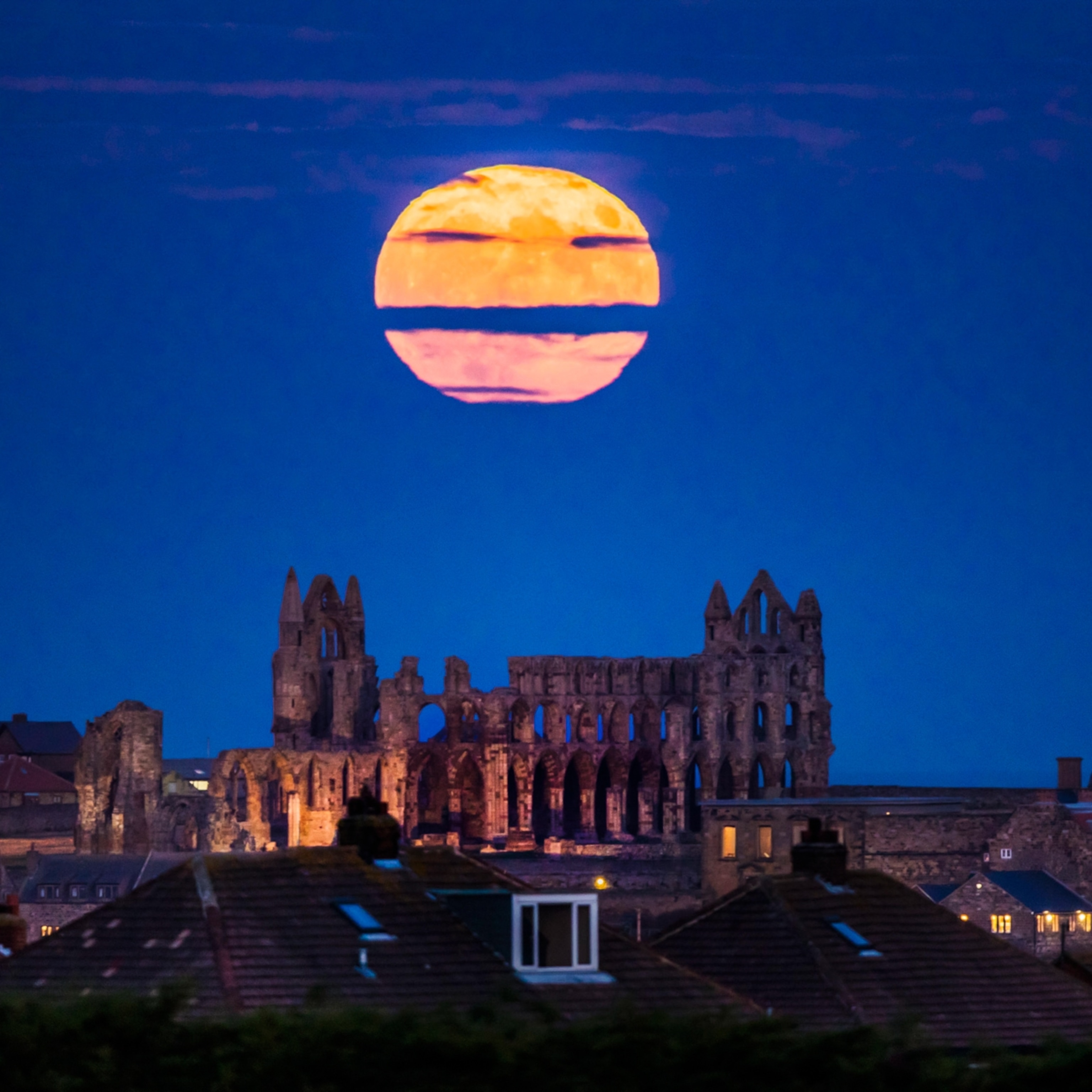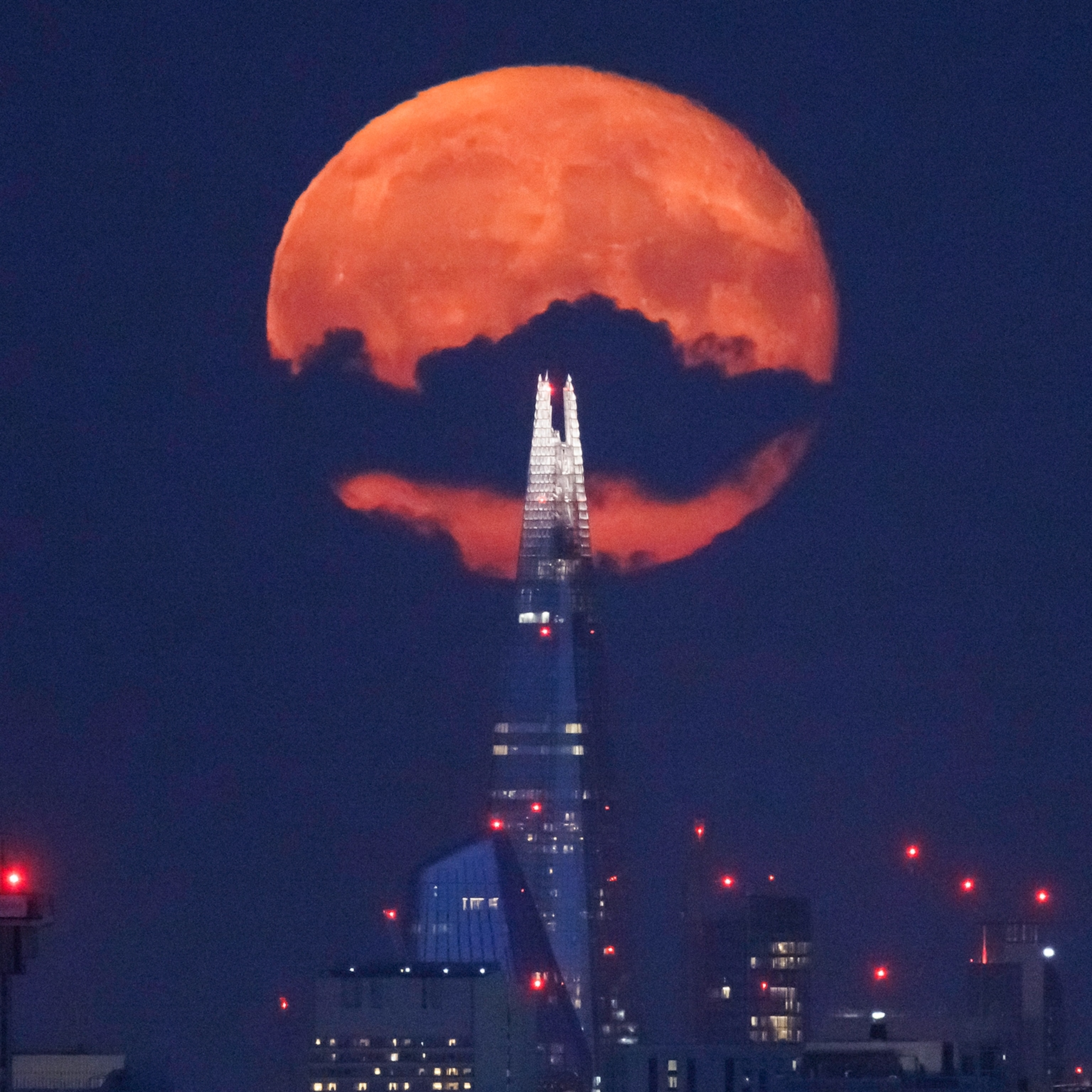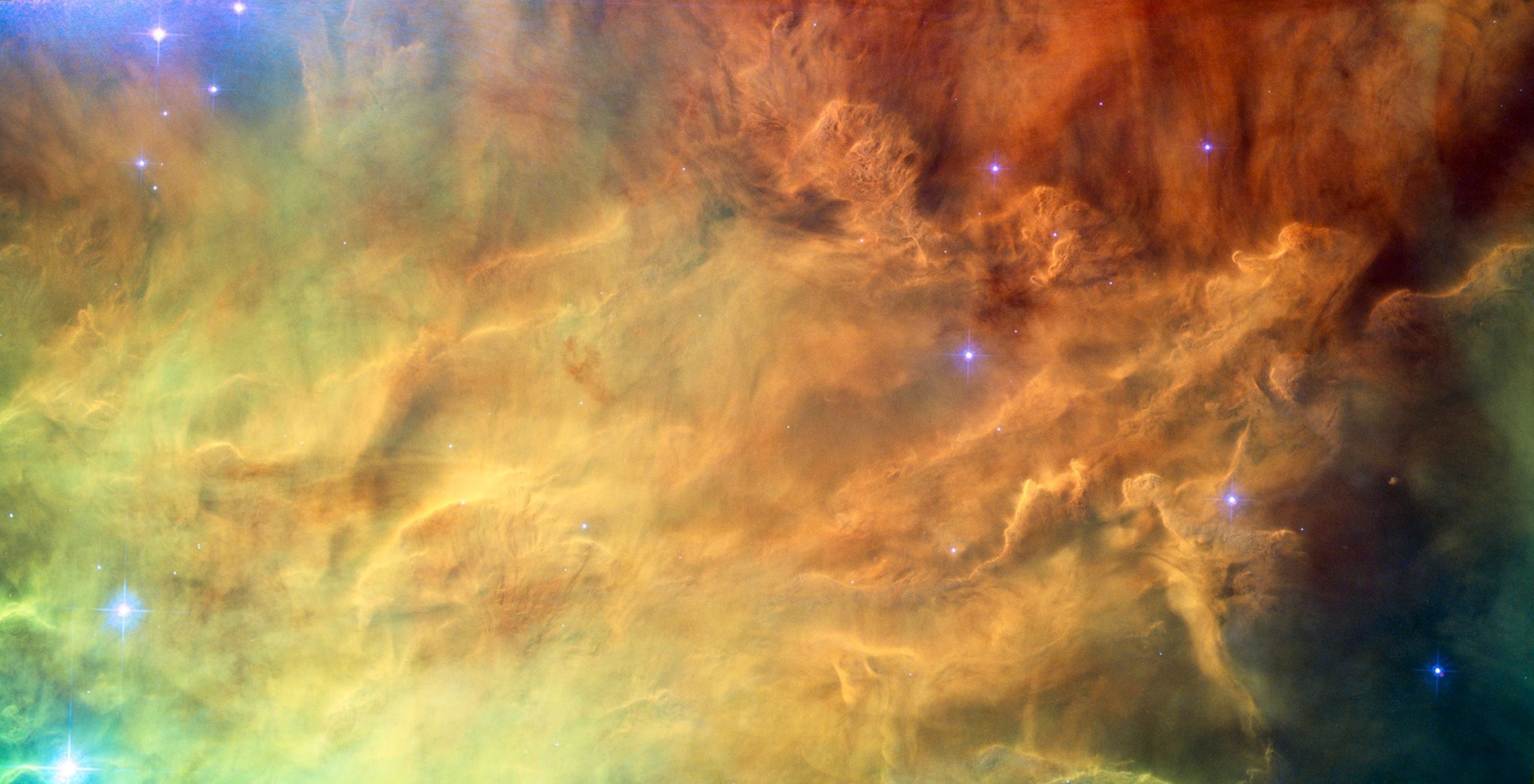
Perseids Primetime, and 10 More Can’t-Miss Sky Events in August
Enjoy a cup of cosmic tea, a glowing lagoon, and a partial solar eclipse as you look up this month.
With the most popular annual meteor shower set to peak under dark moonless skies, and a parade of planets on deck, August promises to provide plenty of cosmic treasures.
So dust off those binoculars and get set to explore this month’s night sky.
Moon meets Green Giant—August 4

In the pre-dawn hours, look for the last quarter moon to guide you to planet Uranus. The pair will be rising together in the eastern sky around midnight and by dawn will be riding high in the southeast. The cosmic pair will only be 6 degrees apart—a separation equal to the width of your three middle fingers held at arm’s length.
Uranus shines at magnitude 5, so it’s at the limit of the naked eye’s visibility, but binoculars will make it easy to spot, even under light-polluted skies. This ice giant has a distinct green hue to it, and even small telescopes will show it off as a tiny disk despite it being a whopping 1.8 billion miles from Earth.
Moon meets Juno—August 5
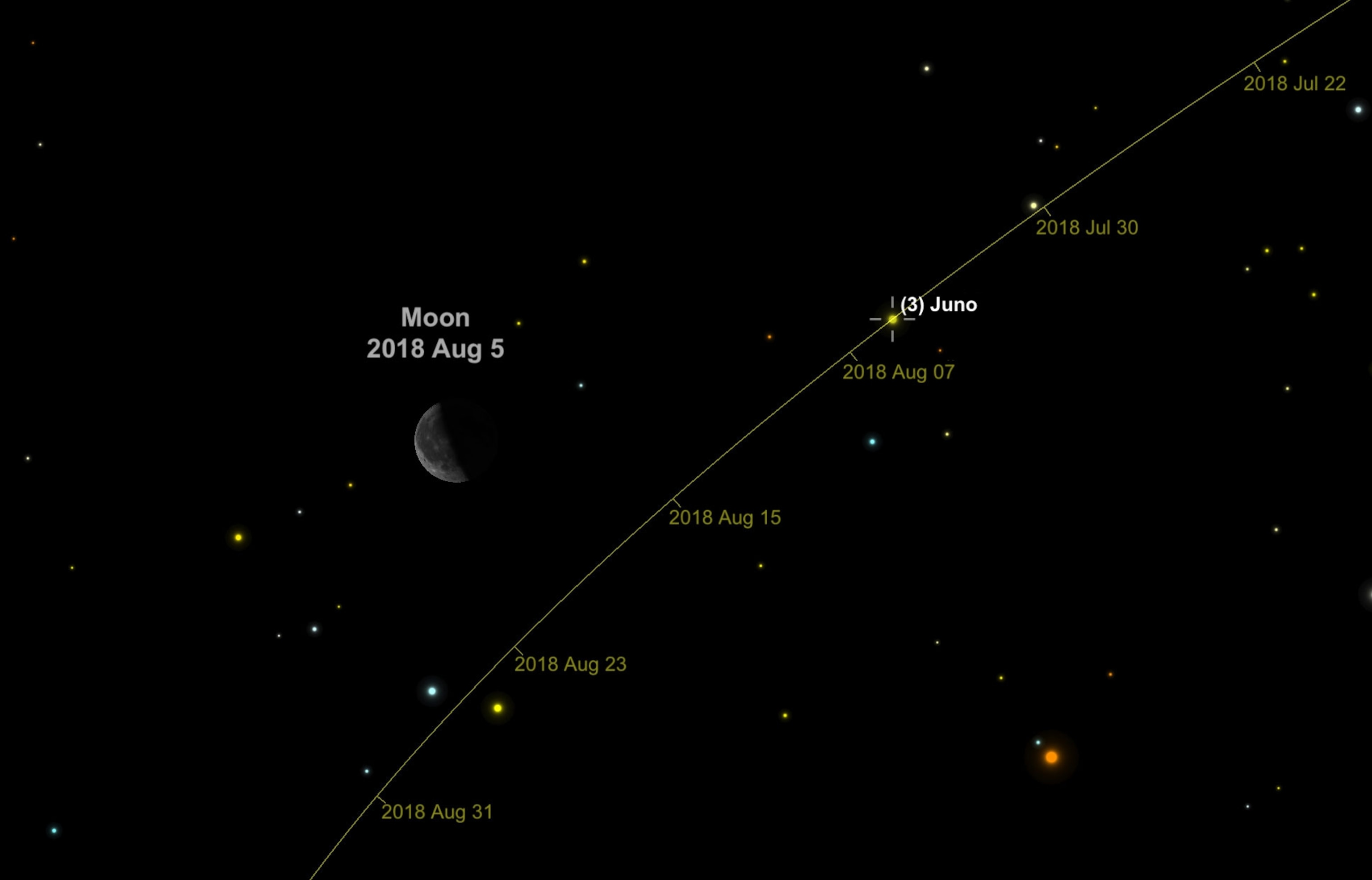
This morning you’ll have a great opportunity to catch a main belt asteroid thanks to its position near the moon.
Juno is the eleventh- largest asteroid and is one of the brightest, currently shining at magnitude 9.3. This makes the 160-mile-wide rock visible in binoculars or small telescopes, floating among the stars that comprise the large, faint constellation Cetus, the whale. Juno will appear about 5 degrees away from the Moon.
The best way to identify and track this giant space rock is to sketch the same star field over a couple of nights; the star that moves is the asteroid.
Moon meets Aldebaran—August 6
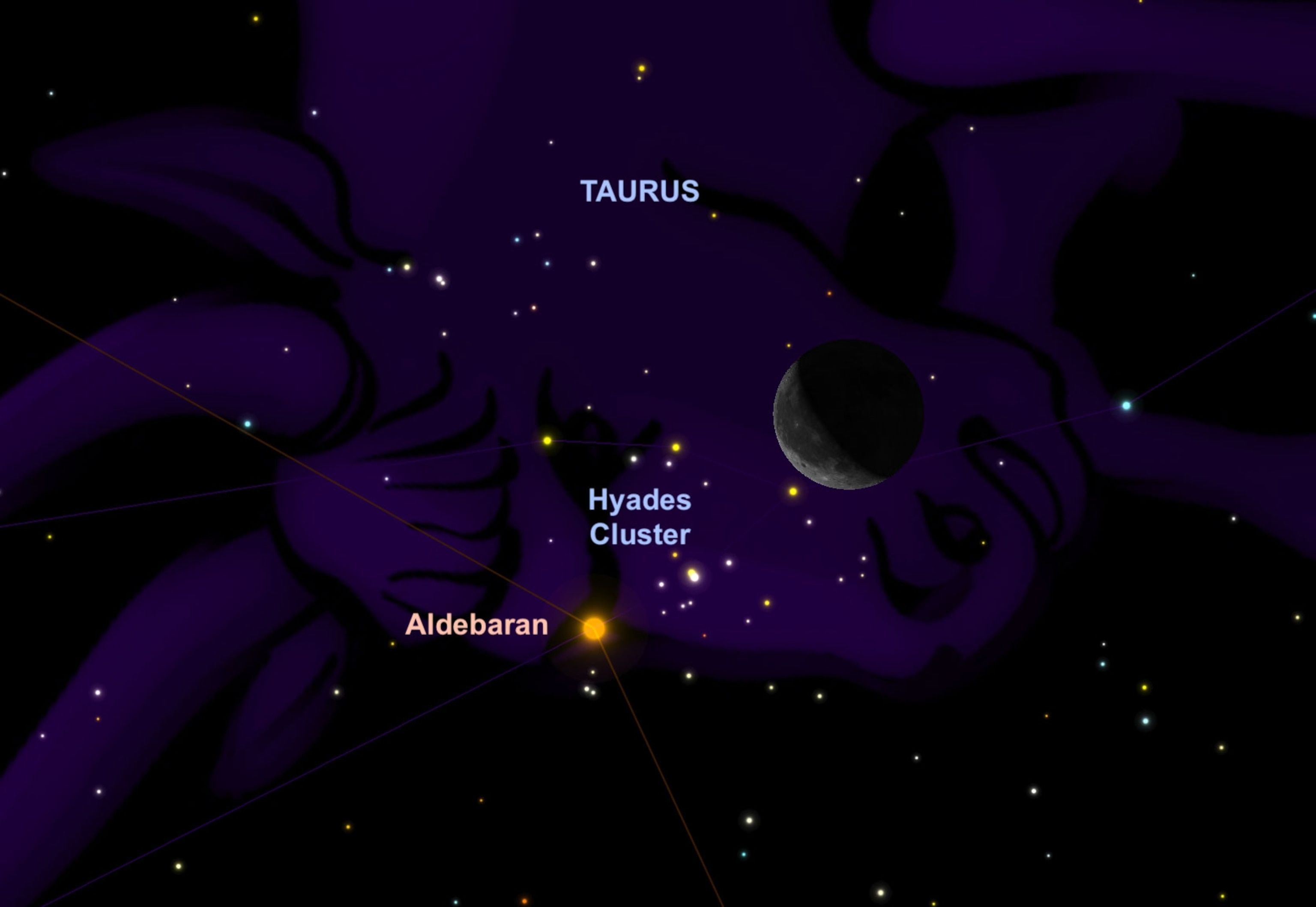
Look to the east for the waning crescent moon rising in the predawn hours.It will be paired with the bright orange star Aldebaran. This lead star in Taurus, the bull constellation, will appear only 5 degrees from the moon—equal to the width of the your three fingers held at arm’s length. Look carefully with binoculars between the two objects to catch sight of the Hyades star cluster. At 178 light-years distant, this distinct V-shaped collection of stars is one of the closest clusters to Earth.
Cosmic teapot—August 8
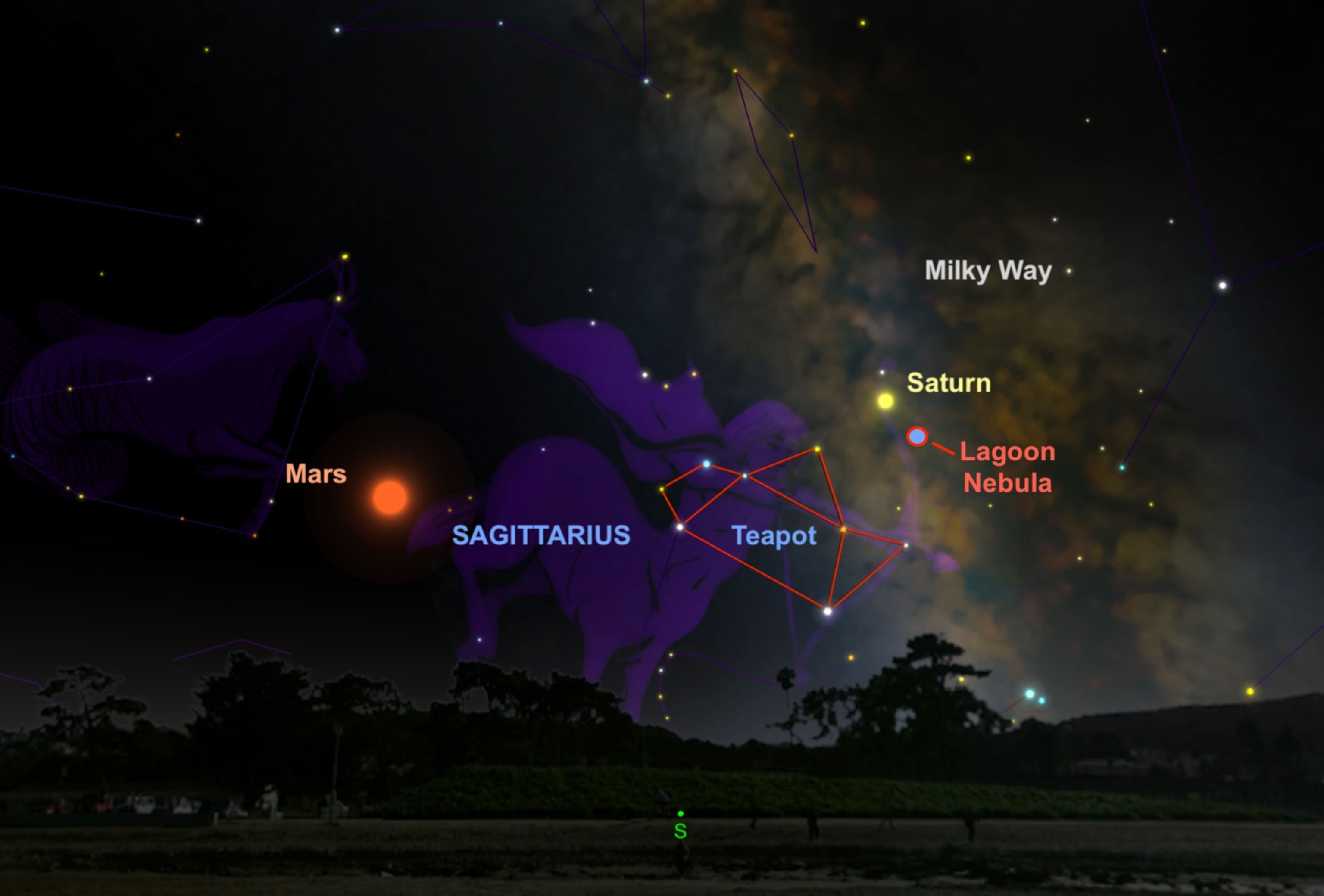
Friday night’s new moon will be a good time to track down the great celestial “teapot,” visible in the southern sky.
Located in the zodiacal constellation Sagittarius, this distinct stellar pattern—complete with handle, lid and spout—marks the heart of the mythical centaur. For even the seasoned stargazer, tracing out the figure of a centaur takes some imagination, but the familiar form of the teapot is rather easy to pick out.
Away from light-polluted cities, the teapot appears to be tipped, with cosmic steam rising into the sky. The pale diffuse band of light arching overhead from north to south is what we call the Milky Way—the ghostly glow from the gas, dust, and billions of suns that make up our home galaxy. In the direction of the teapot, you will be looking toward the galaxy’s central hub, more than 30,000 light-years away.
If you are stuck in the suburbs, you can still observe the Milky Way using binoculars to scan above the teapot. It makes for a great celestial tour.
Lagoon Nebula—August 8
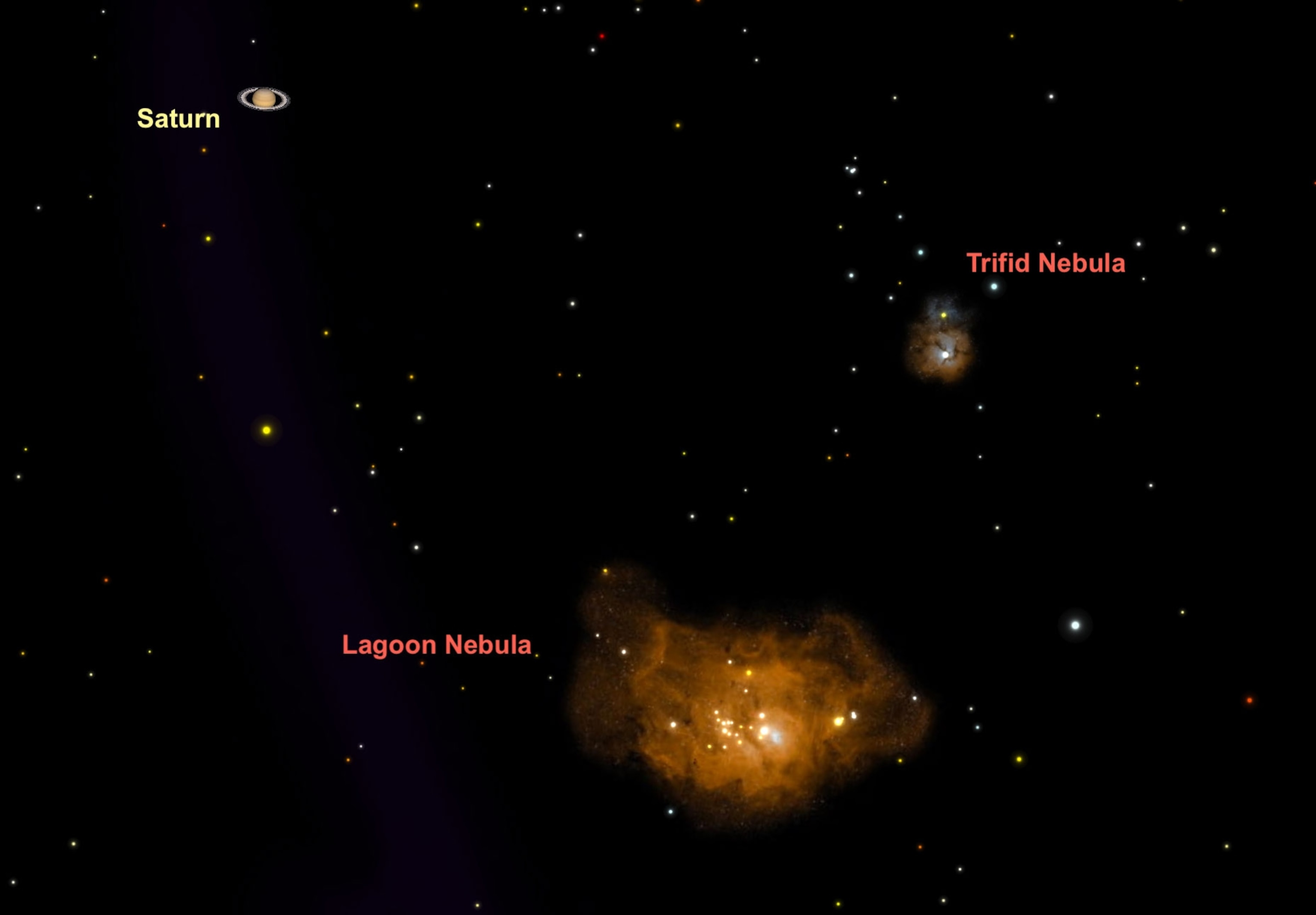
Sagittarius offers another attraction for binocular and telescope users—the giant gas cloud called the Lagoon Nebula. Under dark skies, the faint fuzzy glow of this cosmic gem can be seen with the naked eye.
Located about 6,500 light-years from Earth, the red-and-orange-hued Lagoon contains a cluster of hundreds of young stars nestled within its core. These newborns emit massive amounts of radiation that make the surrounding hydrogen gas glow.
The Lagoon Nebula, also known as Messier 8, got its name back in the 1800s when telescope observers first noted the deep, dark furrow that cuts across its middle. Viewing the Lagoon from a dark location through a telescope will showcase its many other complex structures, such as wispy filaments and bright knots of gas, with clusters of stars scattered within and around the cloud, making the nebula a favorite target for stargazers around the world.
Partial Solar Eclipse—August 11
A partial solar eclipse lasting 3.5 hours will grace the skies of the high Arctic regions of Canada, Greenland, northern Europe, and northeast Asia today.
Maximum eclipse occurs at 5:46 a.m ET (9:46 UT). The moon will begin to take a bite out of the sun starting at sunrise over the extreme northeastern part of North America at 4:02 a.m. ET (8:02 UT), and move across the North Atlantic Ocean, Iceland, parts of northern Europe, and Russia. The moon’s shadow will then sweep down through Mongolia, then China, and finally the Korean peninsula. Beijing will be one of the largest cities to experience this partial solar eclipse. The maximum eclipse will occur at 6:51 pm local time, at which point 23 percent of the sun’s disk will be covered.
Perseids Peak—August 12
From Sunday night, August 12, into the predawn hours of Monday, August 13, look for a flurry of shooting stars from the annual Perseid meteor shower.
A moonless sky will coincide with the Perseids’ peak, so expect a great performance this year. Find a spot that has a clear view of most of the overhead sky and face northeast. In the dark countryside, as many as 60 to 100 meteors per hour may be visible. Straggler meteors from the shower should be visible in the days before and after the peak date. There’s no need for binoculars or a telescope; the best way to enjoy the show is to sit back on a reclining lawn chair or blanket and count your wishes.
Moon meets Jupiter—August 16/17
For two consecutive nights, check out the first quarter moon gliding past the brilliant planet Jupiter.
Moon meets Saturn—August 20
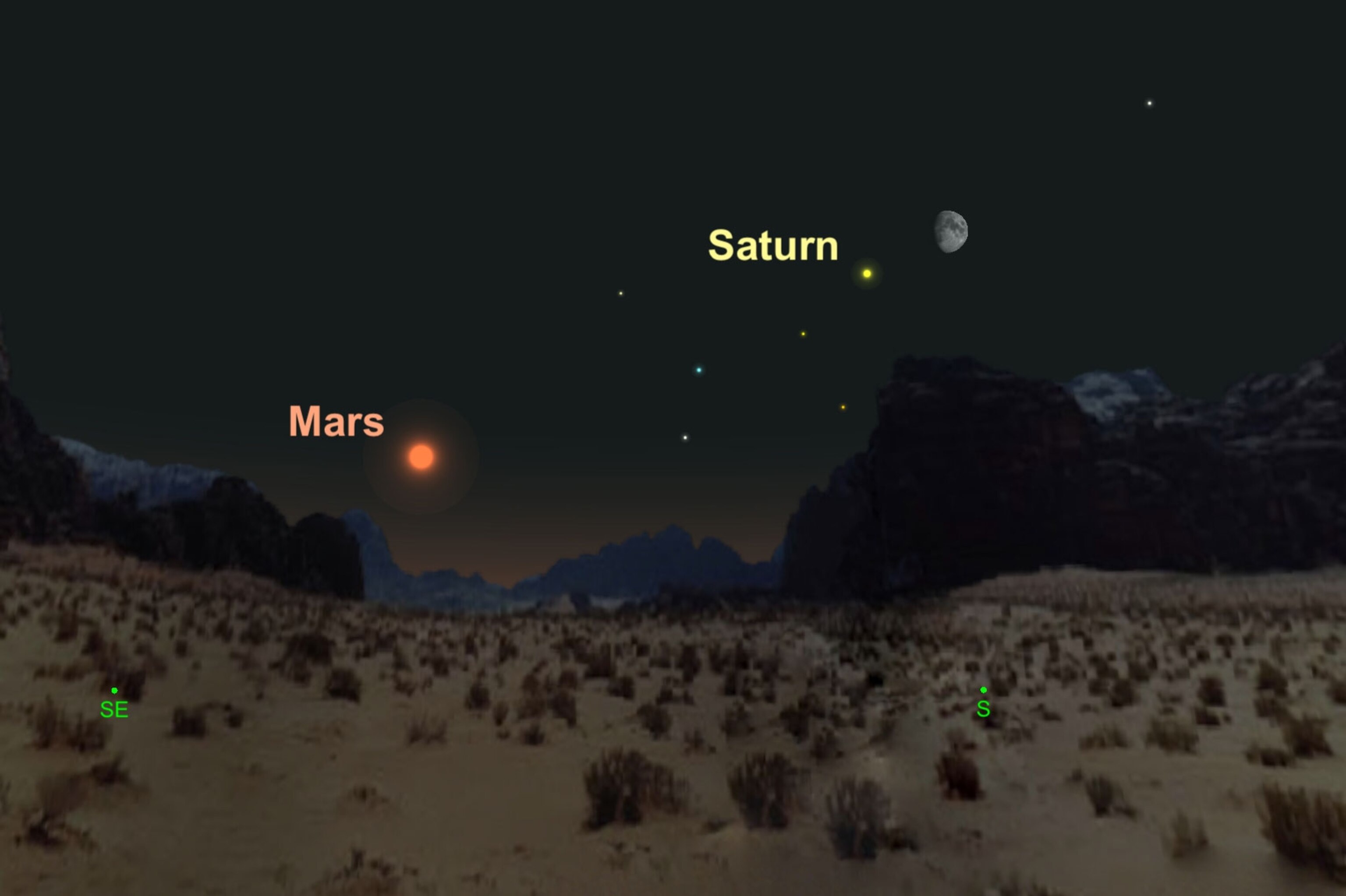
The waxing gibbous moon is in the constellation Sagittarius, next to the bright yellow-colored Saturn. The cosmic pair will be only 4 degrees apart—a spacing equal to about 8 moon disks. Since the gas giant will only be about a month past opposition, it will still be worth training a backyard telescope on it.
Moon meets Mars—August 22/23
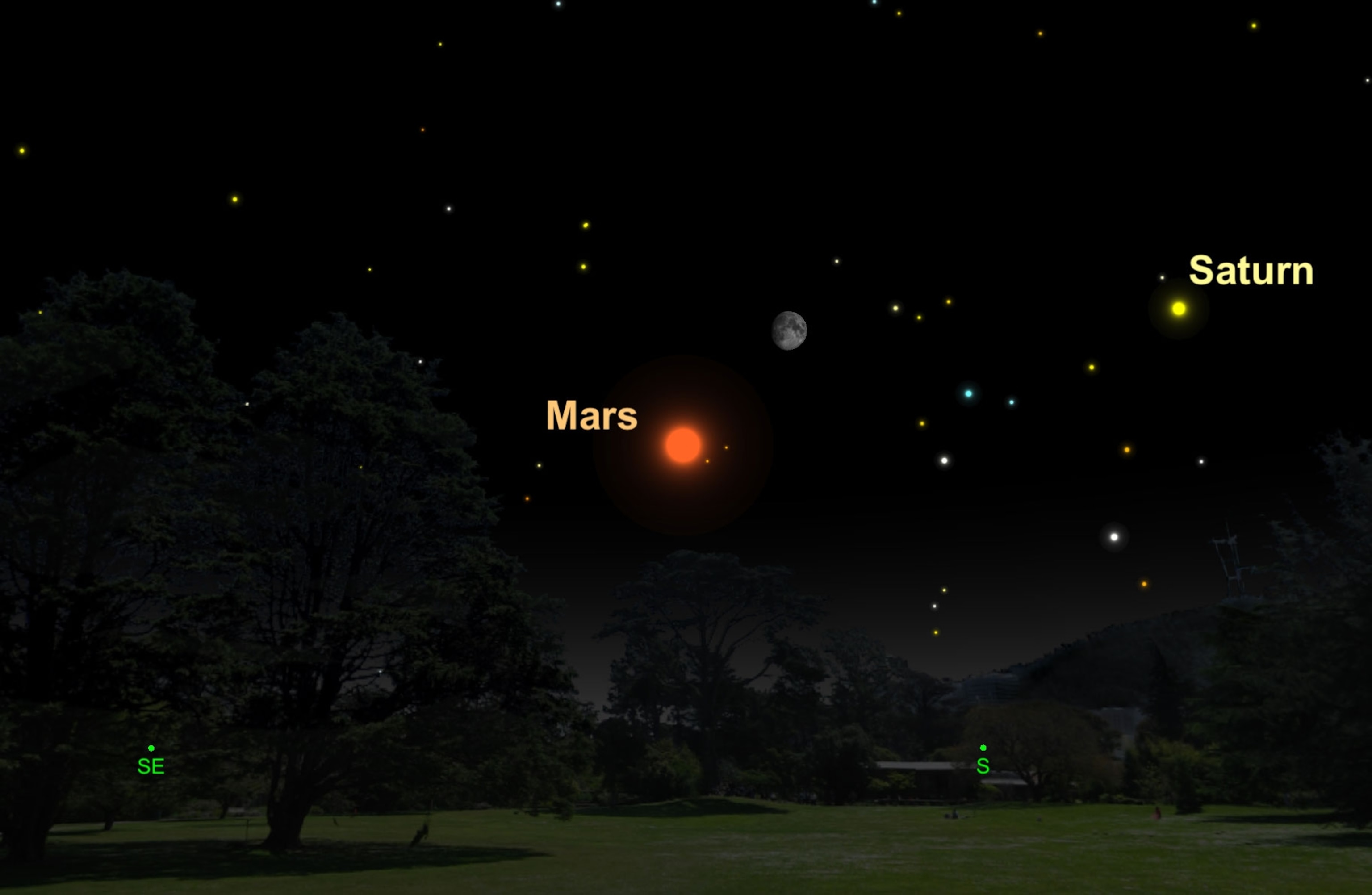
The Moon will pair up with the Red Planet for two nights in the southern evening sky, making for a great photo opportunity. With the global dust storm raging across Mars for more than two months now, look to see if the planet’s color is still more yellow due to its dust-laden atmosphere, or if it has changed back to its more normal orange-red.
Mercury Morning—August 26
The innermost planet will climb high enough in the eastern sky and will be bright enough by about 45 minutes before local sunrise to be easily glimpsed with the naked eye.
Clear skies!
Andrew Fazekas, the Night Sky Guy, is the author of Star Trek: The Official Guide to Our Universe. Follow him on Twitter, and Facebook

